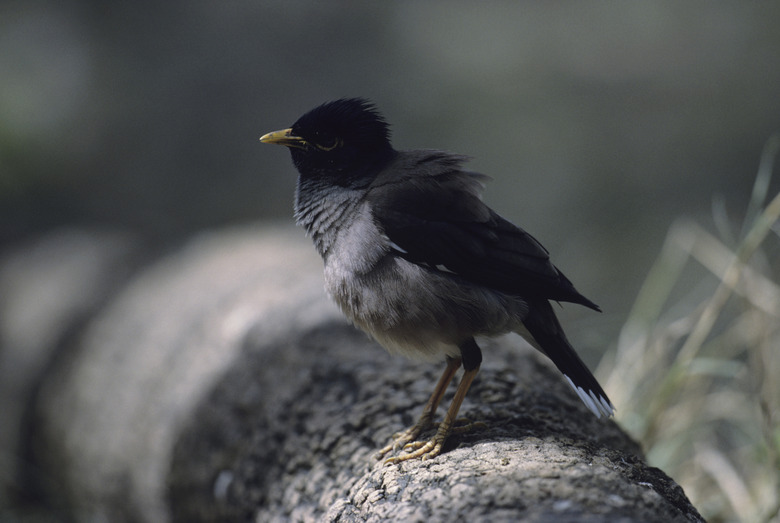How To Care For Baby Mynah Birds
Mynahs are intelligent, friendly, and chatty birds that can make great pets. Caring for a baby mynah requires that you feed him a special diet, provide him with warm housing, and socialize with him. Meeting your baby mynah's needs will help him grow into a healthy adult bird you can enjoy as a pet for years to come.
Feeding a baby mynah bird
Feeding a baby mynah bird
Baby mynah birds need to eat multiple times a day. Fortunately, they do not need to eat at night because mynahs sleep during the night. Ideally, feeding should occur every two hours from 6 a.m. to midnight. A baby mynah should be fed approximately 10 times a day until she is 10 days old. A baby mynah should only eat formula for the first 10 days of her life.
Transitioning a mynah to an adult diet
Transitioning a mynah to an adult diet
After the bird reaches his 10th day of life, you can slowly begin to feed him soft, mashed-up fruits, such as bananas, papayas, and mangoes. At this time, you can also begin to reduce the number of feedings you give per day. You can begin to incorporate commercial pellets, fruits and vegetables, and insects into your bird's diet as he grows. A mynah should be completely weaned by the time he is 8 or 9 weeks old.
These birds do not eat seeds. Commercial pellets supplemented with fruit and insects should make up most of a mynah's diet. You can also feed your bird some vegetables. You should cut your bird's fruit and vegetables into bite-size pieces and offer them in a separate bowl from his pellets. If you see your mynah develop an affinity for one fruit or vegetable, reduce or stop feeding that particular item to encourage him to eat other types of food.
Feed your bird commercial pellets made for soft birds that are low in iron. Too much iron in your mynah's diet may lead to the development of hemochromatosis, a potentially fatal condition. Consult your vet about which pellets are both nutritious and safe to feed to your bird.
Provide a warm habitat
Provide a warm habitat
You can use a shoebox or small aquarium for your baby mynah in her first few weeks of life. Line the bottom of the box or aquarium with a towel. Place a few layers of paper towels on top of the towel to make cleaning up after your baby bird easier.
Keep your bird in a warm, dry place. Use a heating lamp to help keep your bird warm but make sure you put the lamp at least 12 inches away from your bird's box or aquarium so that she doesn't overheat. The ideal temperature for a baby mynah is 96 degrees Fahrenheit. If your bird is overheated, she will open her beak as if panting and hold her wings away from her body, whereas if she is too cold, you'll see her shivering and huddled.
Place a towel over part of your bird's box or aquarium to help block out light at night so she can sleep. You can stop using a heating lamp when your bird grows her first layer of feathers at approximately 2 to 3 weeks of age.
Transition to a suitable cage
Transition to a suitable cage
If you plan to keep your baby mynah as a pet, you should purchase him a suitable cage — one that is 3 to 4 feet wide, 2 feet tall, and 2 feet deep. Mynahs like to hop, so make sure the cage has plenty of perches for your bird to use. Keep your bird's cage in a room where he will receive the most human interaction. Try to place the cage near a window where it will not receive direct sunlight.
Bond with your mynah
Bond with your mynah
If you want your mynah to talk, hand-feeding her when she's a baby is a good way to begin bonding with her. Start repeating the word "hello" around your bird often. Your bird will begin to talk when she's approximately 3 to 4 months old. Don't be surprised if your bird's voice sounds raspy or if her words sound broken initially. She will improve with time and practice.
